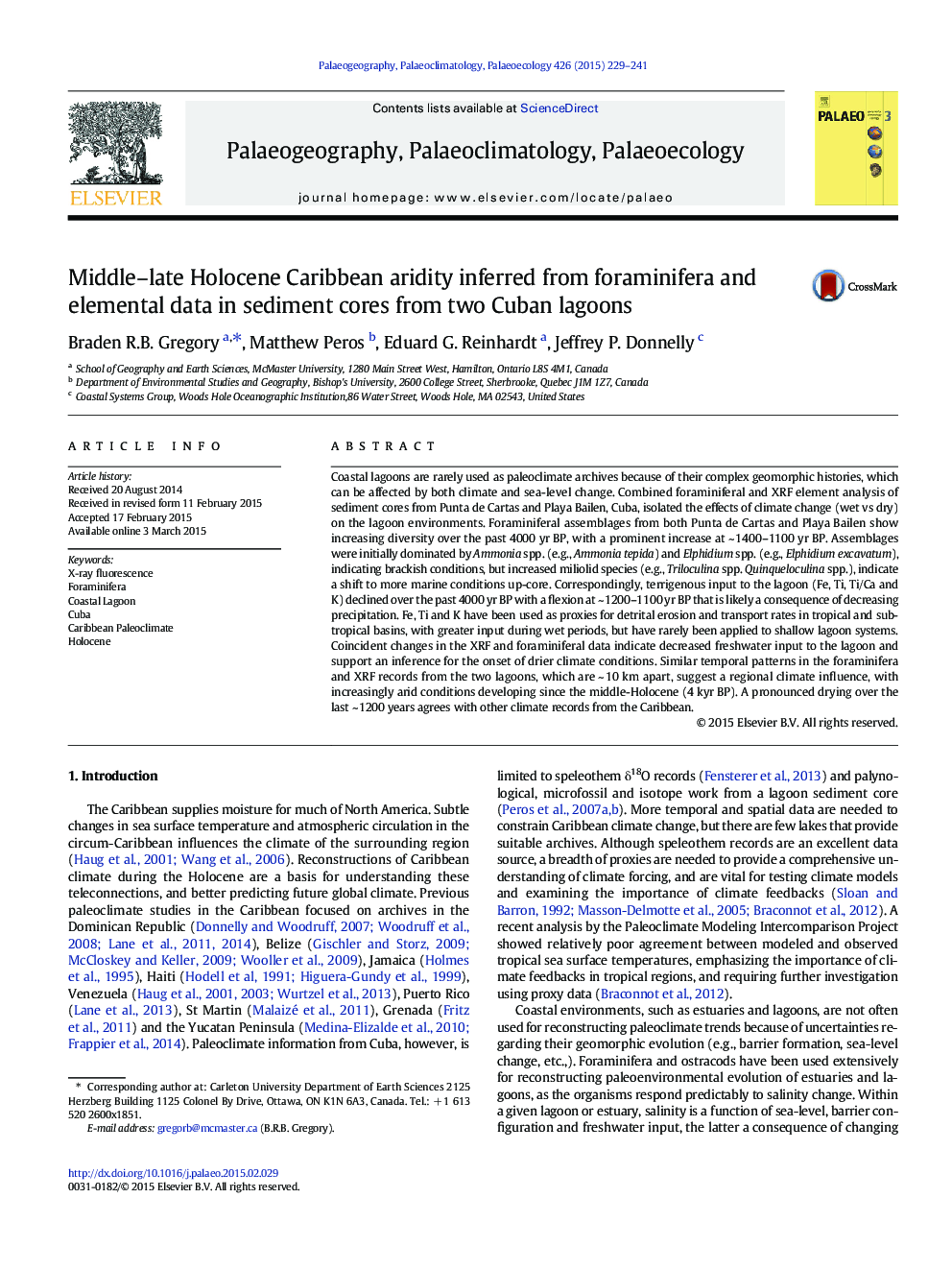| کد مقاله | کد نشریه | سال انتشار | مقاله انگلیسی | نسخه تمام متن |
|---|---|---|---|---|
| 4465995 | 1622164 | 2015 | 13 صفحه PDF | دانلود رایگان |
• We analyze cores from two Cuban lagoons using core scanning X-ray fluorescence, foraminifera and lithology
• Foraminifera suggest increasing salinity up-core; XRF indicate decreased erosion based on Fe, Ti, Ti/Ca and K
• Near-coeval shifts in salinity and trace elements imply decreasing precipitation during the mid- to late-Holocene
• Similar precipitation trends recorded across the Caribbean suggesting a regional signal possibly related to ITCZ movement
• Core scanning XRF, when used alongside a proxy for salinity, is a viable source of paleoclimate data in coastal systems
Coastal lagoons are rarely used as paleoclimate archives because of their complex geomorphic histories, which can be affected by both climate and sea-level change. Combined foraminiferal and XRF element analysis of sediment cores from Punta de Cartas and Playa Bailen, Cuba, isolated the effects of climate change (wet vs dry) on the lagoon environments. Foraminiferal assemblages from both Punta de Cartas and Playa Bailen show increasing diversity over the past 4000 yr BP, with a prominent increase at ~ 1400–1100 yr BP. Assemblages were initially dominated by Ammonia spp. (e.g., Ammonia tepida) and Elphidium spp. (e.g., Elphidium excavatum), indicating brackish conditions, but increased miliolid species (e.g., Triloculina spp. Quinqueloculina spp.), indicate a shift to more marine conditions up-core. Correspondingly, terrigenous input to the lagoon (Fe, Ti, Ti/Ca and K) declined over the past 4000 yr BP with a flexion at ~ 1200–1100 yr BP that is likely a consequence of decreasing precipitation. Fe, Ti and K have been used as proxies for detrital erosion and transport rates in tropical and sub-tropical basins, with greater input during wet periods, but have rarely been applied to shallow lagoon systems. Coincident changes in the XRF and foraminiferal data indicate decreased freshwater input to the lagoon and support an inference for the onset of drier climate conditions. Similar temporal patterns in the foraminifera and XRF records from the two lagoons, which are ~ 10 km apart, suggest a regional climate influence, with increasingly arid conditions developing since the middle-Holocene (4 kyr BP). A pronounced drying over the last ~ 1200 years agrees with other climate records from the Caribbean.
Journal: Palaeogeography, Palaeoclimatology, Palaeoecology - Volume 426, 15 May 2015, Pages 229–241
